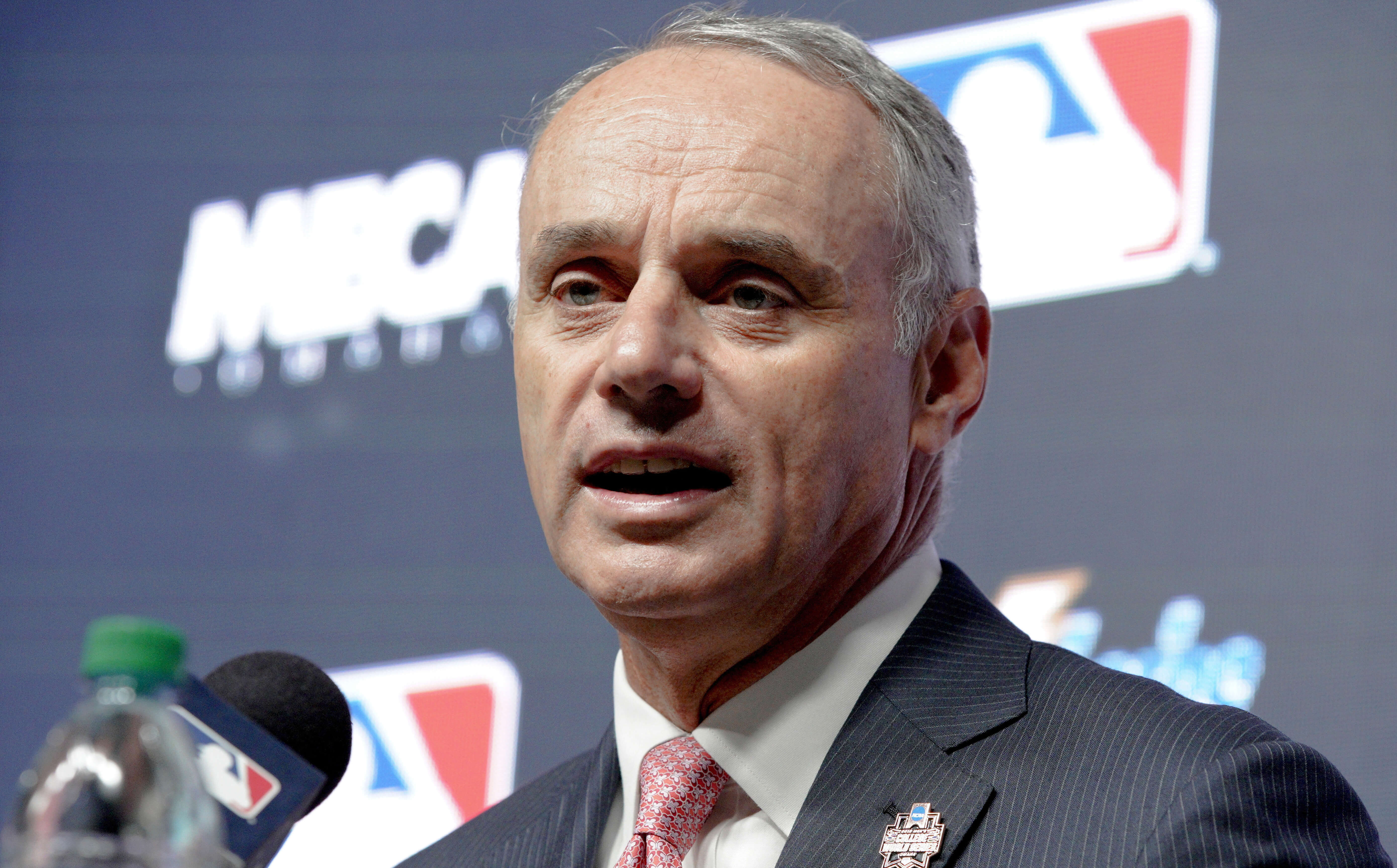
Baseball appears headed to early labor negotiations
NEW YORK (AP) — Baseball players and management appear headed to early labor negotiations that could lead to significant economic changes in the collective bargaining agreement and possibly a new deal past the current expiration of December 2021.
Management backed off its desire for a pitch clock this year in a proposal to the players’ association on Tuesday, putting off most on-field changes to 2020 at the earliest. The union quickly made a counteroffer Wednesday, and the biggest alterations still being discussed for this year are a single trade deadline, most likely on July 31, and lowering the number of mound visits without a pitching change from six to five.
While players have proposed major initiatives that impact economics, such as expanding the designated hitter to the National League and adding provisions that make rebuilding rosters with young players less attractive, management has been focused on on-field issues thus far. Management told the union it would be willing to discuss larger economic issues as part of talks that could lead to a longer labor contract.
Details were disclosed to The Associated Press by people familiar with the negotiations who spoke on condition of anonymity because talks were ongoing. Many aspects of management’s latest proposal were first reported by ESPN.
Among the items put off until 2020 at the earliest are several where an agreement could be reached soon:
— a three-batter minimum for pitchers.
— increasing active rosters from 25 to 26, including a maximum of 13 pitchers, and dropping them from 40 to 28, including a maximum 14 pitchers, from Sept. 1 through the end of the regular season.
— increasing the minimum regular injured list and option recall period for pitchers from 10 days to 15.
— a new rule that position players could pitch only from the ninth inning on, or from the sixth inning on when their team trails by seven runs or more.
The sides remain in discussion over starting extra innings of the All-Star Game and of spring training games with a runner on second base and ending spring training games after 10 innings. They also are discussing experimenting with shorter between-inning breaks combined with televising the start of innings on split-screens alongside commercials.
A single trade deadline would replace the current rules, which have a July 31 deadline for trades without waivers and an Aug. 31 deadline to acquire players who would be eligible for that team’s postseason rosters.
While unilaterally making the decision to experiment with a 20-second pitch clock during spring training this year, management has offered not to pursue a pitch clock in the regular season through 2021. Management has the right to implement a clock in games that count, but baseball Commissioner Rob Manfred has said he is reluctant to take that step without players’ agreement.
Baseball has had 12 collective bargaining agreements starting with the first in 1968 and has never held mid-agreement talks that led to an extension or new deal. The only mid-agreement extension was reached in the settlement of the 1981 midseason streak, in which management gave players credit for major league service during the 50-day walkout in exchange for extending the deal by one year through December 1984.
The NFL and NBA have reached new deals in mid-agreement, motivated by uncapped final years in the football contract and opt-out provisions in the basketball contract.
After experiencing eight work stoppages from 1972-95, baseball has enjoyed a quarter-century of labor peace. But players have become angry because of two straight slow free-agent markets that has seen many deals reached on the eve of spring training or with workouts already underway. St. Louis pitcher Adam Wainwright has talked about the possibility of a strike.
Union head Tony Clark and players have accused rebuilding teams of tanking, a charge management denies. Manfred maintains clubs have the right to rebuild with youth as they please.
The 2012-16 labor contract imposed limits on bonuses for amateurs residing in the U.S., Canada and Puerto Rico, and the 2017-21 deal capped spending on international amateurs. In addition, the current deal raised the top luxury tax rate for repeat offenders from 50 percent to 95 percent, which has impacted behavior among the highest-spending teams.
Because of management’s success under the current deal, some team owners may be reluctant for mid-agreement negotiations. However, overall attendance has dropped in three straight seasons, the average last year fell below 30,000 for the first time since 2003 and six ballparks set record lows for a season. MLB attributed the drop largely to bad weather last spring.
___
More AP MLB: https://apnews.com/MLB and https://twitter.com/AP_Sports
The Western Journal has not reviewed this Associated Press story prior to publication. Therefore, it may contain editorial bias or may in some other way not meet our normal editorial standards. It is provided to our readers as a service from The Western Journal.
Truth and Accuracy
We are committed to truth and accuracy in all of our journalism. Read our editorial standards.
Advertise with The Western Journal and reach millions of highly engaged readers, while supporting our work. Advertise Today.












